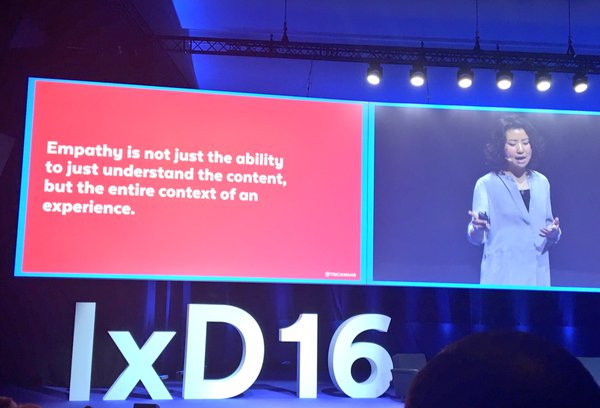Does privacy need better design?
What are the ramifications of emotional design? Of attachment to artificial intelligence?
These were some of the big ideas on display in Helsinki for Interaction 16, a conference started by the Interaction Design Association (IxDA). IxD16, as the conference is called, was held March 1-4 this year.
The conference is an industry gathering, but with the feel of an “un-school.” Topics all technically focus on interaction design, the more technical and systems-design thinking that sits within user experience design. UX (and no worries if you haven’t heard of it) is a design methodology that is responsible for laying out websites and providing specific rationale behind maximizing user centricity. Every wonder about the systems-thinking behind your iOS or Android apps? Well, a UX designer and or an interaction designer came up with that map, then laid out the app and decided where everything goes and why.
As interaction designers we are creators of moments, not things. Time is one of our materials of impact, experience & perception. #ixd16
— Uday Gajendar (@udanium) March 3, 2016
This year’s conference really focused on ethnography, machine learning, artificial intelligence (AI) and the internet of things (IoT). An underlying theme across IxD16 wasn’t just “good design solves problems,” but a deep questioning of what constitutes good design — from an ethical, technical and diversity-minded standpoint.
Kate Darling, a keynote speaker, touched on the ways in which people relate to AI. Anthropomorphize AI and that’s not necessarily a bad thing. Darling talked about the fear surrounding robots, and a fear of being over-connected. Her talk really stressed that robots won’t replace intimacy, and that having emotional responses to them isn’t bad.
Tricia Wang covered how perspective is not truth, and really broke it down by comparing Renaissance painting to VR. What we see, even if it’s considered real, may not create empathy, and where does truth or perspective lie in that? VR doesn’t make us more empathetic, it’s just a new form of storytelling.
But really, the underlying topics at IxD16 were all about empathy.
From Wang and Darling’s keynotes to Chris Noessel on “agentive technology,” to Airbnb’s Amber Cartwright on the power of machine learning to Yotanan Kelib’s talk on why diversity matters to my talk on online harassment and social media, the conference really focused on what matters inside of UX — which is users and their needs.
https://twitter.com/fjord/status/705359673390731264
As a designer who works mainly in empathy, emotions and languages, Interaction 16 in Helsinki hit a bunch of great notes for me. As a designer who works with engineers in machine learning and AI, it was exciting to see that kind of technical language not only be included in talks, but actually make up a fair percentage of the talks.
Technology-led design and generative design are not going anywhere, especially as machine learning algorithms become more useable and more commonplace. The conversations around empathy and technology are incredibly important right now, and it was great to be at a conference that didn’t shy away from them.
Playing the climbing game from https://t.co/WJzpxG0eKv at #ixd16 / @BoulderBrighton pic.twitter.com/cKYvgm5AIL
— Andy Budd (@andybudd) March 3, 2016
IxDA’s 10th annual gathering, Interaction 17, will be in New York next February.
Join our growing Slack community
Join 5,000 tech professionals and entrepreneurs in our community Slack today!
Donate to the Journalism Fund
Your support powers our independent journalism. Unlike most business-media outlets, we don’t have a paywall. Instead, we count on your personal and organizational contributions.
